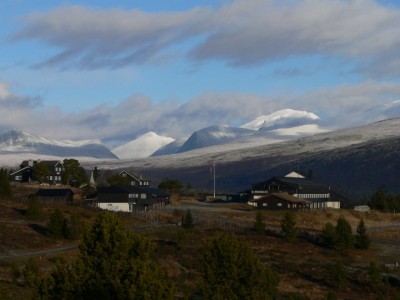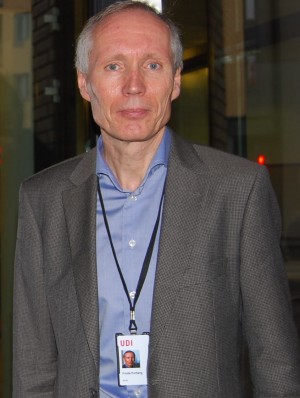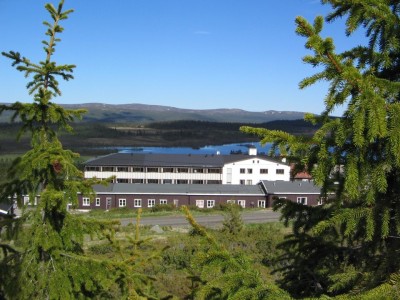An acute shortage of housing for refugees has resulted in hundreds being sent to the mountains of Norway and put up in hotels. The boss of immigration agency UDI warns, however, that much less comfortable accommodation will likely be offered to refugees coming later, as UDI resorts to construction of barracks and the chartering of so-called “asylum ships.”

Frode Forfang, the hard-pressed director of UDI, said at a press briefing in Oslo on Monday that his agency is now planning to set up what amount to domestic refugee camps. The camps would be able to house around 3,000 refugees and be established in or around some of Southern Norway’s largest cities.
In Northern Norway, UDI wants to charter vessels with passenger accommodation that can be berthed in harbours along the coast.
“The most important thing is that they (the asylum seekers who continue to cross borders into Norway) get a bed, a roof over their heads and food,” Forfang told reporters. “That’s the lowest standard.”
He reported that 8,800 asylum seekers arrived in Norway in October, compared to 4,900 in September. Norway received more asylum seekers in those two months alone than during the entire first half of the year.

The numbers are large for a country of 5 million people unaccustomed to having refugees arrive at their doorstep, and also in a political perspective. It was just a few months ago that Members of Parliament were having heated arguments over the Labour Party’s proposal, for example, that Norway take in 5,000 UN-registered refugees from Syria this year and 5,000 next year. Now UDI’s widely expected estimate is that as many as 65,000 will have arrived by the end of next year.
The sheer numbers, not least those taking the so-called “Arctic Route” and crossing Norway’s far northern border to Russia, mean that UDI must resort to unusual emergency measures. With more than 100 people arriving every day in an area with only relatively small settlements and little vacant housing, UDI thinks berthed ships with cabins for passengers can help solve the problem.
Centers for asylum seekers also require “a certain amount of infrastructure,” Forfang said. “We must have easy access to personnel, health care and such,” Forfang said. “And we need solutions that can last through the winter.” Available passenger ships can function as temporary asylum centers, have the meeting rooms and dining facilities needed and be put in place relatively quickly.
In the meantime, hotels have been leased to serve acute housing needs, at a cost of NOK 475-1,350 (USD 55-158) per person per day. Norwegian Broadcasting (NRK) reported that UDI needs to move away from such expensive emergency solutions. Newspaper Aftenposten reported Monday on how UDI has taken over hotels that earlier have lodged Norwegians on holiday or attending company seminars. Among the mountain hotels now being used are the Rondablikk Høyfjellshotell near the Rondane National Park, the Gålå Høyfjellshotell in Sør-Fron, Trysil-Knut Hotel and Trysil Hotel in the ski resort of Trysil, the Morgedal Hotel in Telemark, Valdres Høyfjells Hotell and Savalen Apartmentment Hotel in Tynset.

In one case, Aftenposten reported, some refugees being driven in a bus to the relatively remote Hornsjø Høyfjellshotell in Øyer panicked when they feared they were being kidnapped. It was dark outside, they didn’t understand where they were going and they tried to get the driver of the minibus to turn around.
After a few days, however, with their own beds, lots of food, scenic mountain views and the peacefulness of the area, exhausted refugees soon calmed down. One 27-year-old man from Syria told Aftenposten it was an opportunity to relax. “It’s beautiful here, the sunrise is fantastic,” he said. “Now I’m waiting for the snow to fall so I can try to learn to go skiing.” His days are spent playing backgammon, cards and ping-pong, and wondering what will happen next as Norwegian authorities process applications and start a settlement process.
“We understand that it can seem remote to live in a mountain hotel,” Kjersti Vaugelade-Bause of UDI told Aftenposten. “The most important thing now is to get a roof over their heads. This acute accommodation is temporary and our intention is to move them (the asylum seekers), but it has to do with how this situation develops.”
At some hotels, residents of the closest towns have been arriving to offer assistance. Local Lions Club members in Øyer, for example, showed up one day with vehicles full of sleds, toys and clothes for children at the Hørnsjø hotel. All told around 500 refugees have been lodged in the area around the mountains of Rondane.
The manager of the hotel, Øyvind Wistrøm, told Aftenposten he also has welcomed local residents offering language classes, activities and companionship. He said he tried to interest a group to go for a hike in the scenic area, after they’d had a chance to relax for a few days. Not many people showed up, Wistrøm said, “but then one of the refugees patted me on the shoulder and explained that they simply felt they had done enough walking for awhile.”
newsinenglish.no/Nina Berglund

